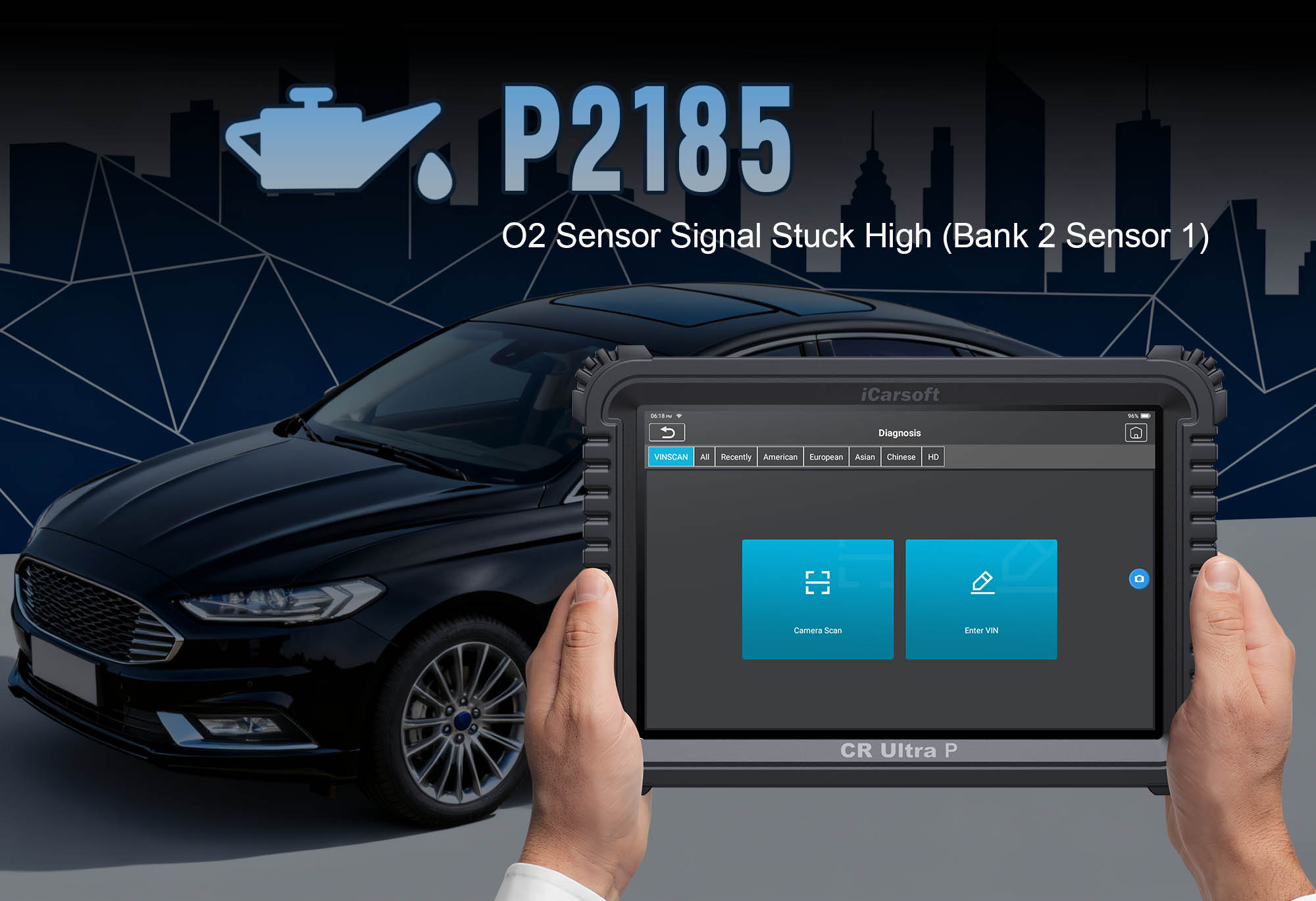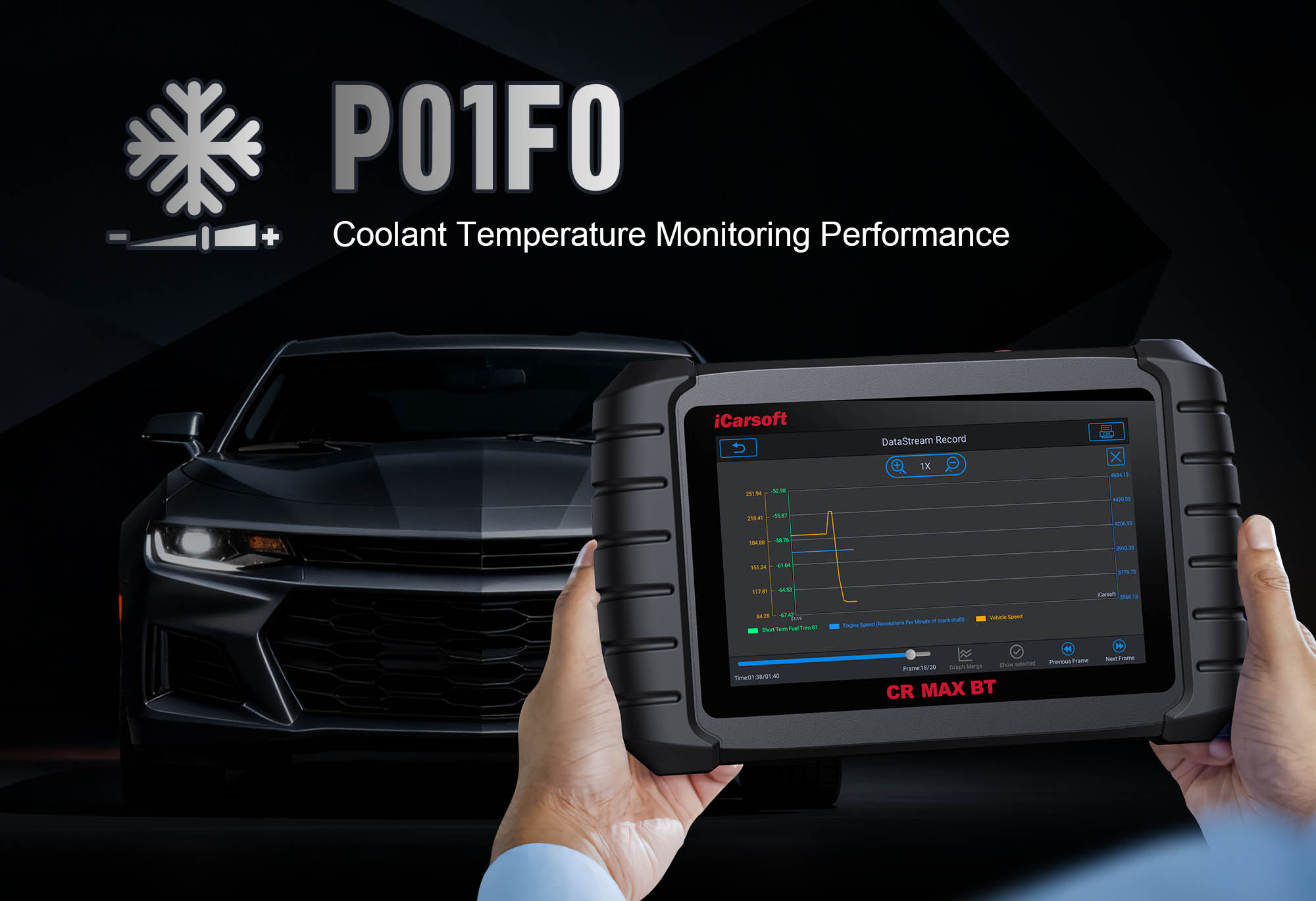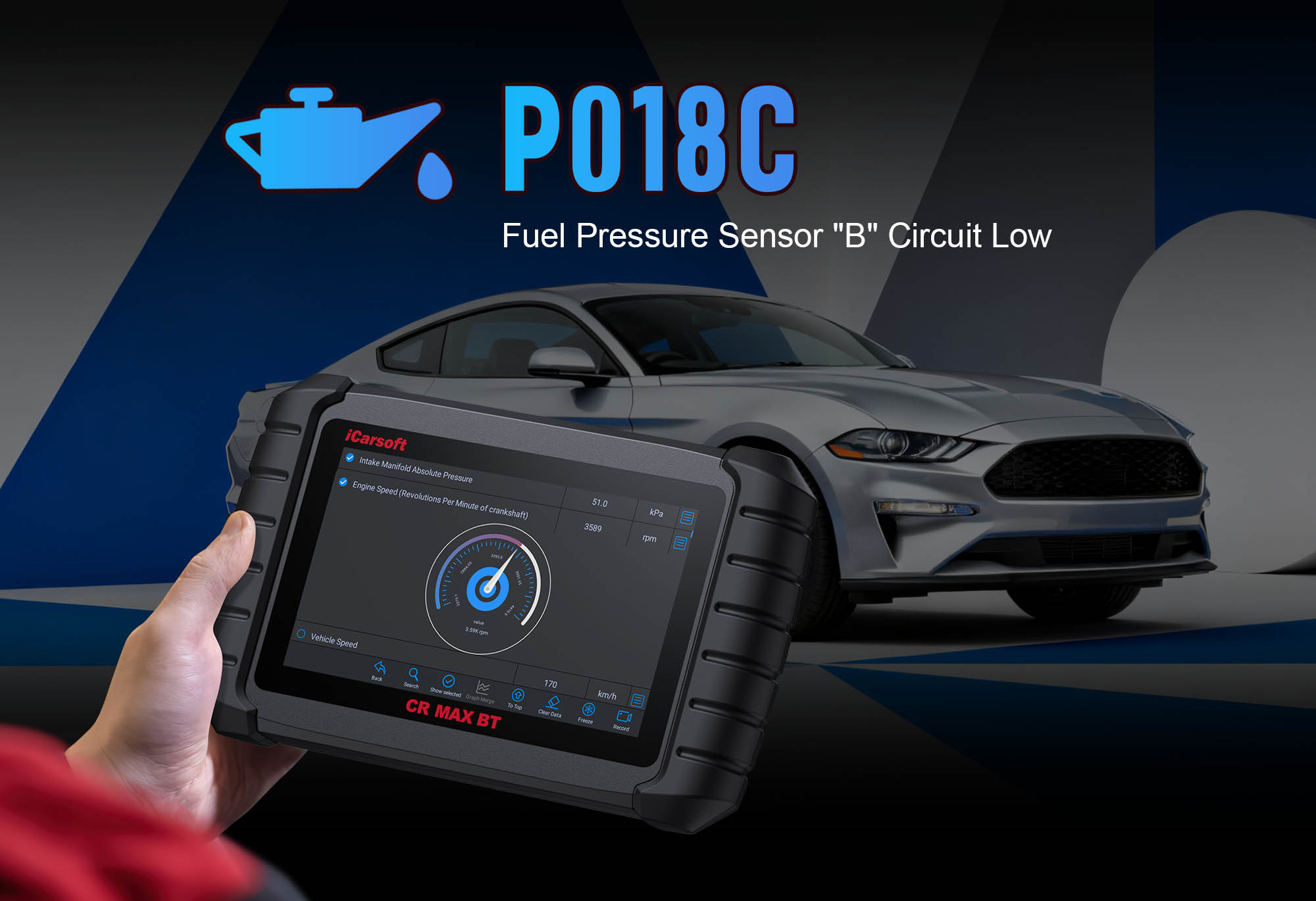Diagnose & Clear P2185 with iCarsoft CR Ultra P
If your vehicle’s engine runs hotter than normal, triggers a check engine light, or struggles with poor fuel efficiency, a diagnostic scan may return P2185. This OBD-II code stands for "Engine Coolant Temperature Sensor Circuit Range/Performance (Bank 1, Sensor 1)"—a critical fault indicating the Engine Control Module (ECM) has detected abnormal readings from the primary coolant temperature sensor. This sensor monitors coolant temperature to adjust fuel injection, ignition timing, and cooling fan operation; erratic readings can lead to overheating, reduced performance, or increased emissions.
Basic scanners might only flag a "coolant sensor issue" but can’t measure live temperature data, test sensor resistance, or validate cooling system operation—leaving you guessing between a faulty sensor, wiring damage, or a failing thermostat. The iCarsoft CR Ultra P, with its OE-level engine diagnostics, real-time temperature tracking, and sensor validation tools, solves this. Let’s break down how to diagnose and resolve P2185 with precision, using the CR Ultra P’s unique features to restore accurate coolant temperature monitoring and protect your engine.
Understanding P2185: Causes & Key Symptoms
The engine coolant temperature (ECT) sensor is a thermistor mounted in the engine block or cylinder head, where it measures the temperature of the coolant circulating through the engine. It sends a voltage signal to the ECM: low voltage (0.5V) indicates high temperature (e.g., 220°F/104°C), while high voltage (4.5V) indicates low temperature (e.g., 40°F/4°C). P2185 triggers when the ECM detects readings outside the expected range (e.g., a "cold" signal when the engine is hot) or inconsistent with other sensors (e.g., intake air temperature).
Key Symptoms of P2185
-
Erratic Temperature Gauge: The dashboard gauge fluctuates between hot and cold, or stays stuck at "cold" even when the engine warms up.
-
Overheating Risk: The cooling fan may fail to activate (if the sensor reads "cold"), causing the engine to overheat.
-
Poor Fuel Economy: The ECM may enrich the fuel mixture unnecessarily (thinking the engine is cold), increasing fuel consumption.
-
Rough Idle or Hesitation: Incorrect temperature data disrupts fuel injection timing, leading to unstable idle or sluggish acceleration.
-
Check Engine Light: Illuminates alongside potential secondary codes (e.g., P0128 for coolant temperature below thermostat threshold).
Common Causes of P2185
|
Cause
|
Description
|
|
Faulty ECT Sensor
|
A worn thermistor fails to change resistance properly, sending incorrect voltage signals to the ECM.
|
|
Wiring/Electrical Issues
|
Frayed wires, loose connectors, or corrosion disrupt the signal between the sensor and ECM.
|
|
Coolant System Problems
|
A stuck-open thermostat keeps coolant too cold, or low coolant levels prevent the sensor from reading accurately.
|
|
Sensor Contamination
|
Coolant leaks or debris coat the sensor, insulating it from true temperature changes.
|
|
ECM Malfunction
|
Rarely, the ECM’s internal circuit for processing ECT signals fails, misinterpreting valid data.
|
Why iCarsoft CR Ultra P Excels at Diagnosing P2185
Accurate temperature data is critical for engine health, and the CR Ultra P’s specialized features target P2185’s root causes:
Real-Time Temperature & Voltage Tracking
Monitors ECT sensor voltage and corresponding temperature readings, identifying discrepancies (e.g., 4.5V signal when coolant is 190°F).
Sensor Resistance Testing
Measures the ECT sensor’s resistance at different temperatures, verifying if it matches manufacturer specs (e.g., 2,000 ohms at 77°F/25°C).
Cooling System Validation
Checks cooling fan activation, thermostat operation, and coolant flow—critical for ruling out system issues vs. sensor faults.
Topology Mapping
Visualizes the ECT sensor circuit (wires, connectors, ECM) as a color-coded diagram, highlighting corrosion or breaks.
Global Vehicle Coverage
Supports 200+ brands (Ford, Toyota, BMW, Audi, etc.) and engine types, including 2018+ models with advanced sensor protocols.
41 Hot Service Functions
Includes coolant system bleeding, fan control tests, and ECM reset—essential for post-repair validation.
Component Location Guide
Pinpoints the ECT sensor’s exact position (engine block/cylinder head) for quick access during inspection.
Step-by-Step: Diagnose P2185 with iCarsoft CR Ultra P
-
Safety First & Initial Checks
1. Let the Engine Cool: Wait 2–3 hours after driving to avoid scalding from hot coolant.
2. Check Coolant Level: Inspect the reservoir and top off with the correct coolant type if low—low levels cause false readings.
3. Locate the ECT Sensor: Use Component Location > Engine > Cooling System > ECT Sensor to identify its position (near thermostat housing or cylinder head).
-
Connect the CR Ultra P & Confirm P2185
Plug the CR Ultra P into the OBD-II port, power it on, and pair with the CR Link VCI (auto-connected via Bluetooth). Select AutoVIN Identify to retrieve engine type, ECT sensor specs (resistance/voltage range), and ECM protocol. Navigate to Engine > Fault Codes > Read Codes to confirm P2185. Tap Code Details for insights (e.g., "Volkswagen Golf: ECT Sensor Circuit Range/Performance; Voltage: 4.5V, Expected: 1.0–2.0V at Operating Temp; Check Sensor or Wiring"). Note related codes (e.g., P0117, P0118) and resolve P2185 first.
-
Analyze Live Data for ECT Anomalies
1. Start the engine and idle. Go to Engine > Live Data > Cooling System and monitor: ECT Sensor Voltage (drops from ~4.5V cold to ~1.0–2.0V at operating temp), ECT Sensor Temperature (rises steadily to 195–220°F/90–104°C), Intake Air Temperature (IAT)—significant mismatch = faulty sensor.
2. Test under load: Drive 10–15 minutes, check if ECT readings stabilize. Fluctuations or failure to reach normal temps = sensor or thermostat issue.
-
Test the ECT Sensor & Circuit
1. Resistance Test: Turn off engine, disconnect ECT sensor connector. Set tool to "Ohms" and probe pins—measure at room temp (77°F/25°C) for specs match. Heat sensor gently; resistance should decrease. No change = faulty sensor.
2. Wiring Continuity & Short Test: Use "Continuity Test" for sensor-ECM wires (beep = good). Check for shorts to ground (infinite resistance = good; low = short).
3. Cooling Fan Activation Test: Go to Engine > Special Functions > Cooling System > Fan Control—activate manually to confirm fan operation.
-
Repair or Service to Fix P2185
- ECT Sensor Replacement: Remove old sensor (drain small coolant if needed), install OEM-compatible unit (e.g., Dorman 902-301 or Bosch 0280130033). Refill coolant and bleed with Cooling System Bleeding function.
- Wiring/Connector Repairs: Fix frayed wires with heat-shrink tubing; clean corroded connectors with contact cleaner and dielectric grease.
- Thermostat Replacement: If engine fails to reach operating temp (ECT < 180°F/82°C), replace with OEM-spec unit. Monitor warm-up with the tool.
- ECM Reset & Relearn: Run ECM Reset, idle engine 10 minutes for ECM to relearn ECT values.
-
Clear P2185 & Validate the Repair
1. Clear the Code: Reconnect the CR Ultra P, go to Engine > Fault Codes > Clear Codes, confirm P2185 deletion.
2. Test Drive for Normal Operation: Drive 20–30 miles, monitor temperature gauge stability. Ensure engine reaches and maintains operating temp.
3. Post-Repair Validation: Run Engine > System Check—"No Faults Detected" confirms ECT sensor function.
4. Save Report: Document via History & Report for future reference.
Preventing P2185 Recurrence
-
Quarterly ECT Checks: Use the tool to test sensor resistance and live data—catch early thermistor degradation.
-
Coolant System Maintenance: Replace coolant every 50,000–100,000 miles (per manufacturer specs) to prevent sensor contamination.
-
Connector Inspections: Check ECT sensor/ECM connectors annually—clean and secure loose connections.
-
Free Software Updates: Use the CR Ultra P’s One-Key Upgrade to add advanced ECT sensor diagnostics for new vehicle models.
Conclusion
P2185’s ECT sensor range/performance issues disrupt engine efficiency and risk overheating. The iCarsoft CR Ultra P simplifies diagnosis with real-time tracking, resistance testing, and system validation, ensuring you fix the root cause—whether a faulty sensor, wiring damage, or thermostat failure.
With 200+ brand coverage and 41 service functions, the CR Ultra P is more than a P2185 fix—it’s a long-term investment in engine health. Restore accurate temperature monitoring, improve fuel efficiency, and drive with confidence—all with one professional-grade diagnostic tool.





